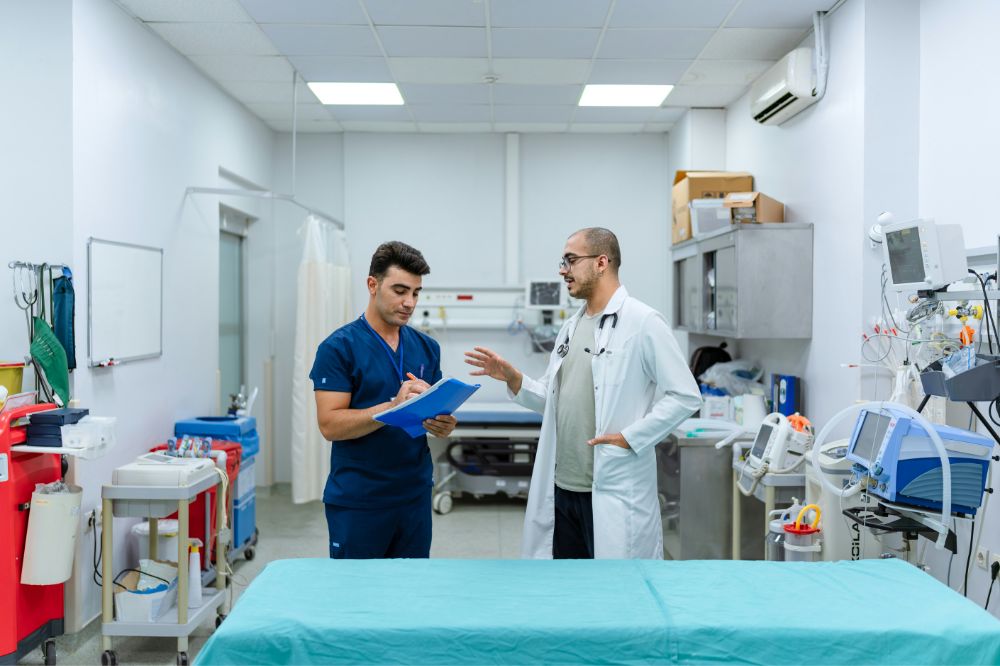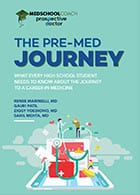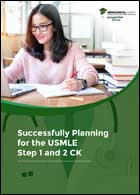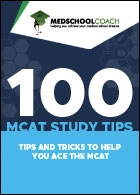
Table of Contents
Medical school graduation means you’re a doctor of medicine! However, you’ll need to then complete residency to practice medicine in the US as a licensed physician. Residency is post-graduate training in a specific medical specialty that a doctor completes after medical school.
Residents are doctors who can prescribe medication and treat patients with a significant amount of autonomy — much more than during medical school rotations. However, residents operate under supervision by fully trained attending physicians until completing residency.
Medical residency programs typically last 3-7 years, depending on your chosen specialty. Every residency is attached to a specialization, so you cannot be a medical resident without a specialty. There is a standard resident salary that depends on how many years you’ve been a resident.
Depending on their medical career goals, some doctors may move from residency to a fellowship, which is an optional, competitive program that allows them to gain highly specialized training in certain specialties.
Our Residency Spotlight offers an inside view of different specialties through the eyes of real residents. Gain practical insights into daily routines, challenges, and rewards to guide your residency application.
Duration and Program Years
Many residency specialties require 3 years of hands-on experience, but some require as many as 7 years.
For instance, primary care residencies generally require 3 years, whereas some of the more complex specialties go into PGY-6 or PGY-7, such as plastic surgery and neurosurgery.
You have to be able to refer to which year of residency you’re in, so doctors use PGY-X, with X referring to the year. For example, “PGY-2” stands for “Postgraduate Year 2.” Your PGY determines your responsibilities, your salary, and how close you are to finishing.
Ready to apply? The ERAS timeline lays out when each milestone hits.
Download Our Free Guidebook: Medical Specialty Spotlight
Salary Expectations
The salary for healthcare residents is standardized by hospital/healthcare system, reflecting how many years you’ve been a resident, and the local cost of living. Southern residencies generally pay the least while residencies in NYC or California generally pay the highest.
Though resident salaries differ by location and institution, below is a table of estimated salaries during your residency based on the area where your program is located:
| PGY Level | Low-Cost Areas (South, Rural) | Moderate-Cost Areas (Midwest, Smaller Cities) | High-Cost Areas (Northeast, Bigger Cities) | Very High-Cost Areas (NYC, LA) |
| PGY-1 | $60,000 | $63,000 | $68,000 | $90,000+ |
| PGY-2 | $62,000 | $66,000 | $71,000 | $95,000+ |
| PGY-3 | $65,000 | $69,000 | $74,000 | $100,000+ |
| PGY-4 | $68,000 | $72,000 | $77,000 | $105,000+ |
| PGY-5 | $71,000 | $75,000 | $80,000 | $110,000+ |
| PGY-6 | $74,000 | $78,000 | $84,000 | $115,000+ |
| PGY-7 | $77,000 | $82,000 | $88,000 | $120,000+ |
Resident salary is not impacted by specialty, unlike post-residency expected salary.
After you complete your residency, salaries differ wildly based on specialty and location. For more info on post-residency salary expectations, read more here.
Read Next: Caribbean Medical Schools – Pros, Cons & Top Programs
Most & Least Competitive Specialties
Some specialties are very popular but difficult to match with. Consider various specialties that align with your future career goals, especially if you have your eyes set on a highly competitive specialty.
Most competitive specialties:
- Dermatology
- General surgery
- Plastic surgery
- Otolaryngology
- Orthopedic surgery
- Obstetrics & gynecology (OBGYN)
- Radiology
Least competitive specialties:
- Family medicine
- Internal medicine
- Pediatrics
- Emergency medicine
- Anesthesiology
- Neurology
- Psychiatry
Learn More: Least Stressful Specialties With Best Work-Life Balance
Getting Into Residency
To get into a medical residency, you typically must apply via the AAMC ERAS (Electronic Residency Application Service). Exceptions include military residencies and certain specialties, such as urology or ophthalmology.
Once you apply, you’ll have several interviews and then undergo a process that I’ll detail below: The Match.
Prerequisites for applying to residency include an MD/DO (or expectation to complete a DO or MD program this school year), USMLE Step 1 and 2 scores, and choosing which 1-3 specialties you’re applying to.
Apply Using ERAS
ERAS is the application process most common for residencies, run by AMCAS (Association of American Medical Colleges). Much like a med school application, you’ll submit letters of recommendation, test scores, and a personal statement.
ERAS opens in May, but you aren’t allowed to submit applications until September. When ERAS opens in May, fill in your personal info, documentation, the experiences section, and even a first draft of your personal statement.
In the summer, request 2-3 letters of recommendation from faculty; they submit LORs by September. Make sure you’ve taken USMLE Step 2 CK (tutoring available) or COMLEX (for DO applicants; tutoring available). Edit your personal statement and get trusted colleagues to review it. Determine which 1-3 specialties you’re applying to.
When September comes, you’ll submit your ERAS application. The average number of programs that residency applicants submit to is 78, but we recommend finding the average for your preferred specialty and sticking to that. Each program you apply to costs more money.
Should you send letters of intent? Learn more here.
Next, Residency Interviews
After you apply, programs will send out initial interview offers between mid-September and early October. Since many programs use a rolling process, invitations may continue through December. Hope for 10-15 invitations; the median for applicants who later got matched is 14 interviews.
Increase Your Odds of Matching
Interviews actually take place from October through January. More competitive specialties may hold interviews from October to November, while less competitive specialties may conduct interviews from December to January.
Check your email regularly. Competitive programs fill their available interview slots within hours. Because of last-minute cancellations, slots may open up with very little notice.
Residency interviews may be in-person or virtual. These are all-day affairs, often including:
- Morning reports with current residents
- 1-3 panel interviews with the program director and admissions committee members
- Facility tours
- Meals with faculty or resident doctors
Learn More: Favorite Residency Interview Tips
Finally, Match Week
The National Resident Matching Program (NRMP) runs the Match Process.
In February, you’ll list the residencies where you interviewed in your rank order list (ROL). Rank the programs based on your genuine interest. Only include programs on your ROL where you would accept a residency position.
Certain residencies use program signals to streamline their admissions process. Learn more about residency signals here.
Residencies also rank applicants by their preference. AAMC uses an algorithm to “Match” applicants to residencies so that as many people as possible are satisfied.
In mid-March, Match Week begins.
On Monday of Match Week, you’ll learn whether you “matched,” but not where. Later that day, unmatched and partially matched applicants may begin the Supplemental Offer and Acceptance Program (SOAP).
SOAP allows eligible applicants to apply to unfilled programs, and programs have 2-3 days to review these applications. SOAP offers go out in 4 rounds on Thursday. Friday is Match Day when you learn where you matched.
Are you a residency applicant who’s married, engaged, or partnered to another applicant? Learn more about Couples Match here.
What to Expect During Residency
Residency programs’ day-to-day differs based on your year of postgraduate medical training. Many residencies share the following daily routines (for daytime residents):
- 6:00 AM — Pre-rounds, checking patient vitals, labs, overnight updates.
- 7:00 AM — Morning reports or morning rounds, where residents discuss patients, diagnoses, and treatment plans. This is where the teaching really happens.
- 9:00 AM — Patient care tasks like taking copious notes, responding to patient pages, checking lab results, communicating with families, and consulting specialists.
- 12:00 PM — Didactics, which is protected education time dedicated not to patient care but to lectures, case presentations, etc.
- All afternoon — More patient care tasks.
- 5:00 PM — Begin the sign-out process, update the night team on daytime happenings, and finish your documentation for the day.
- 1-2 times a week – Most residents will be “on call” meaning they need to stay past their typical hours, potentially overnight, to respond to patient needs.
Especially during your intern year (year 1), you may get assigned a lot of “grunt work.” Once you’re in your second, third, or fourth year, you should be able to delegate your least favorite paperwork to first-year residents.
The salary is low, especially in your first year of residency, compared to what you’ll be making in 3-7 years.
ACGME (Accreditation Council for Graduate Medical Education) regulations have relieved many concerns about extended work hours and expectations. The current standard is a maximum of 80 hours per week. Most resident doctors can expect to work at least 60 hours a week.
To get the most out of this time, learn to communicate clearly, spend plenty of time listening to your supervising physicians and more experienced residents, and prove yourself a reliable, hard-working member of the medical team.
FAQs
Residency comes before fellowship (immediately after medical school). Residency may last 3-7 years, depending primarily on your specialty.
Fellowship follows residency, but not for all doctors. Fellowship training is typically required or recommended only for certain subspecialties — for example, a cardiology residency may be followed by an interventional cardiology fellowship. Fellowships typically last 1-3 years.
A chief resident (also called a senior resident) is a highly experienced resident who takes on leadership and administrative duties, bridging the gap between resident physicians and faculty. Chief residents are typically in their final year of resident training.
Residency interview prep includes going through example questions/answers, preparing your own thoughtful questions, thoroughly researching the program where you’re interviewing, and dressing professionally.
Set yourself up for interview success by understanding the difference between residency interviews and medical school interviews:
- Pre-meds may have 1-3 medical school interviews whereas residency applicants may do 15 interviews or more.
- Med school applicants have to prove themselves as promising potential physicians, whereas would-be residents have already proven themselves by earning an MD or DO.
- Interview questions for residency training programs will focus on clinical experience and past experiences with patients, unlike more generic med school interview questions.
- Residency interview formats are full-day affairs, unlike the hour-long med school interviews. Potential residents tour the facilities, meet current residents, and may even attend morning reports as part of their “interview.”
School of medicine interviews may use the traditional panel format or the newer multiple mini interviews (MMI) format, but residency interviews typically stick to a panel interview with 1-3 AdCom members.
Strengthen Your Residency Application With MedSchoolCoach
We help people like you boost their chances of matching with their ideal residency program through services like personal statement editing, interview coaching, and more. Don’t leave your future up to chance; increase your odds of matching with MedSchoolCoach.
We can strengthen your residency application, prep you for interviews, craft your program and rank order lists, and so much more!

Amar Mandalia, MD
Dr. Mandalia is an accomplished medical writer with multiple manuscripts in peer-reviewed journals and a practicing GI physician in the Orlando area. He is the Admissions Advisor for MedSchoolCoach and has extensive experience helping students get into medical school and residency.





